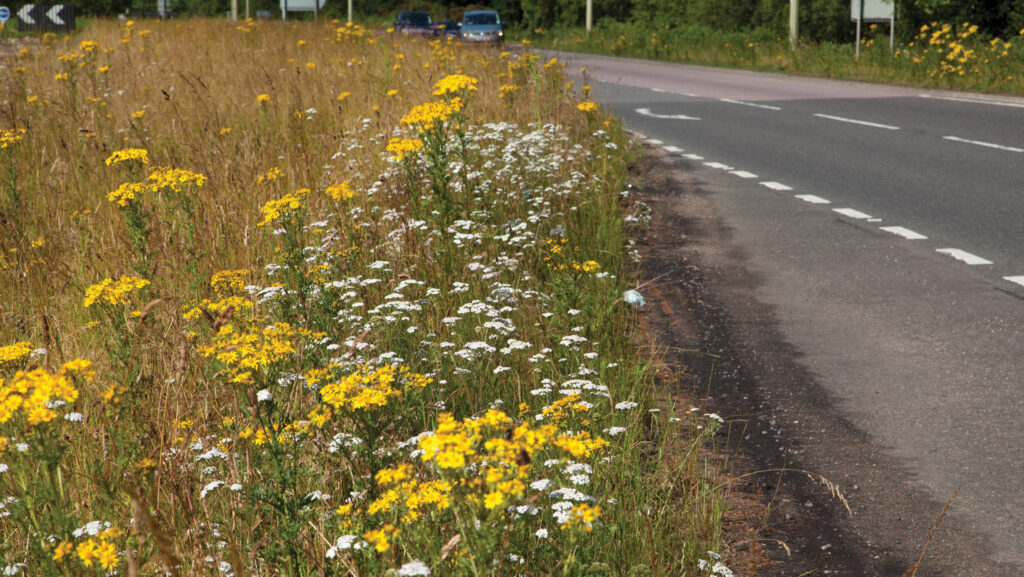Business Clinic: Getting authorities to sort out roadside ragwort
 © Francisco Martinez/ Alamy Stock Photo
© Francisco Martinez/ Alamy Stock Photo Whether it’s a legal, tax, insurance, management or land issue, Farmers Weekly’s Business Clinic experts can help.
Here Russell Reeves, partner, Thrings, advises on how to go about getting the responsible authorities to control ragwort on roadsides.
See also: Business Clinic: Raw sewage contamination – can I claim?
Q: As a landowner/occupier I am responsible for controlling injurious weeds such as ragwort on my land. I am concerned at the huge growth in the appearance of ragwort this year, particularly on the roadside verges adjoining my fields and many others throughout the countryside. This has obvious implications for spread to neighbouring land. What obligations do Local Authorities and the Highways Agency, or anyone else responsible for verges, have regarding ragwort control and what recourse do I have as a landowner to make sure that they meet those obligations?
A: As you have correctly identified, landowners and occupiers are responsible for the control and maintenance of ragwort on their land.
Efforts to manage this weed are ongoing and the Code of Practice, brought in by The Ragwort Control Act 2003, acts as guidance on who is responsible, how to control the spread of ragwort and how to enforce the code.
The code clarifies that the control of common ragwort on the roadside, including verges, is the responsibility of either the Highways Agency if a motorway or the Local Highway Authority in respect of all other public roads.
All landowners and occupiers have the legal obligation to prevent the spread of ragwort, control ragwort and dispose of ragwort safely under the Weeds Act 1959.
Obligations
For the prevention of ragwort, the most effective way is to use strategic management to stop the weed becoming established in the first place.
In the example of verges, any activities which cause disturbance to the soil and loss of ground cover need to be reviewed as this can increase the risk of ragwort appearing.
Where appropriate and safe to do so, this should be avoided.
Where land is already affected, there should be an assessment to determine what action should be taken to prevent the spread of ragwort.
High-risk is when ragwort is present and flowering within 50m of land used for grazing by horses and/or other animals or if the land is used for feed or forage production.
While the categories of high- to low-risk take distance into consideration, landowners should also consider other relevant factors such as topography or prevailing winds.
When this has been determined, there is a responsibility on the landowner to review the risk on a six-monthly basis. If a high risk is identified, immediate action should be taken.
Control methods
The local authority also has an obligation to control the spread of ragwort and the code identifies three main methods:
- Cultural – such as pulling and levering; cutting or burning
- Chemical – such as the use of herbicides following a risk assessment
- Biological – such as using plants’ natural enemies.
The code of practice also provides guidance on safe disposal of ragwort.
Options for disposal of ragwort include sealing in plastic bags for incineration or landfill or disposing in an environmentally acceptable way.
The Environmental Services Department of your local authority should also have identified the nearest waste reception centres for this disposal.
Enforcement
In terms of enforcing the above and action that can be taken to ensure that the Local Highways Authority are following the guidelines, the Weeds Act 1959 empowers the Secretary of State for Environment, Food and Rural Affairs to serve notice requiring an occupier to take action to prevent the spread of ragwort.
If you notice ragwort on verges or all other public roads, the first step is to contact the Local Highways Authority to make them aware and so they can resolve the matter informally.
If no action is taken you can download a complaint form from the government website and either email or post it to Natural England.
If the complaint is valid and considered high-risk, Natural England will contact the landowner who then must clear the weeds within 28 days of the date of the letter.
During June to September landowners must clear the weeds within 14 days.
If horses or livestock are present, then it can be reduced to 7 days.
Do you have a question for the panel?
Outline your legal, tax, finance, insurance or farm management question in no more than 350 words and Farmers Weekly will put it to a member of the panel. Please give as much information as possible.
Email your question to FW-Businessclinic@markallengroup.com using the subject line “Business Clinic”.
